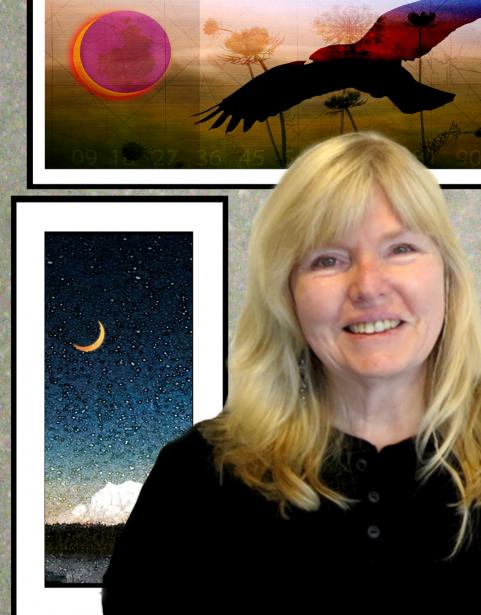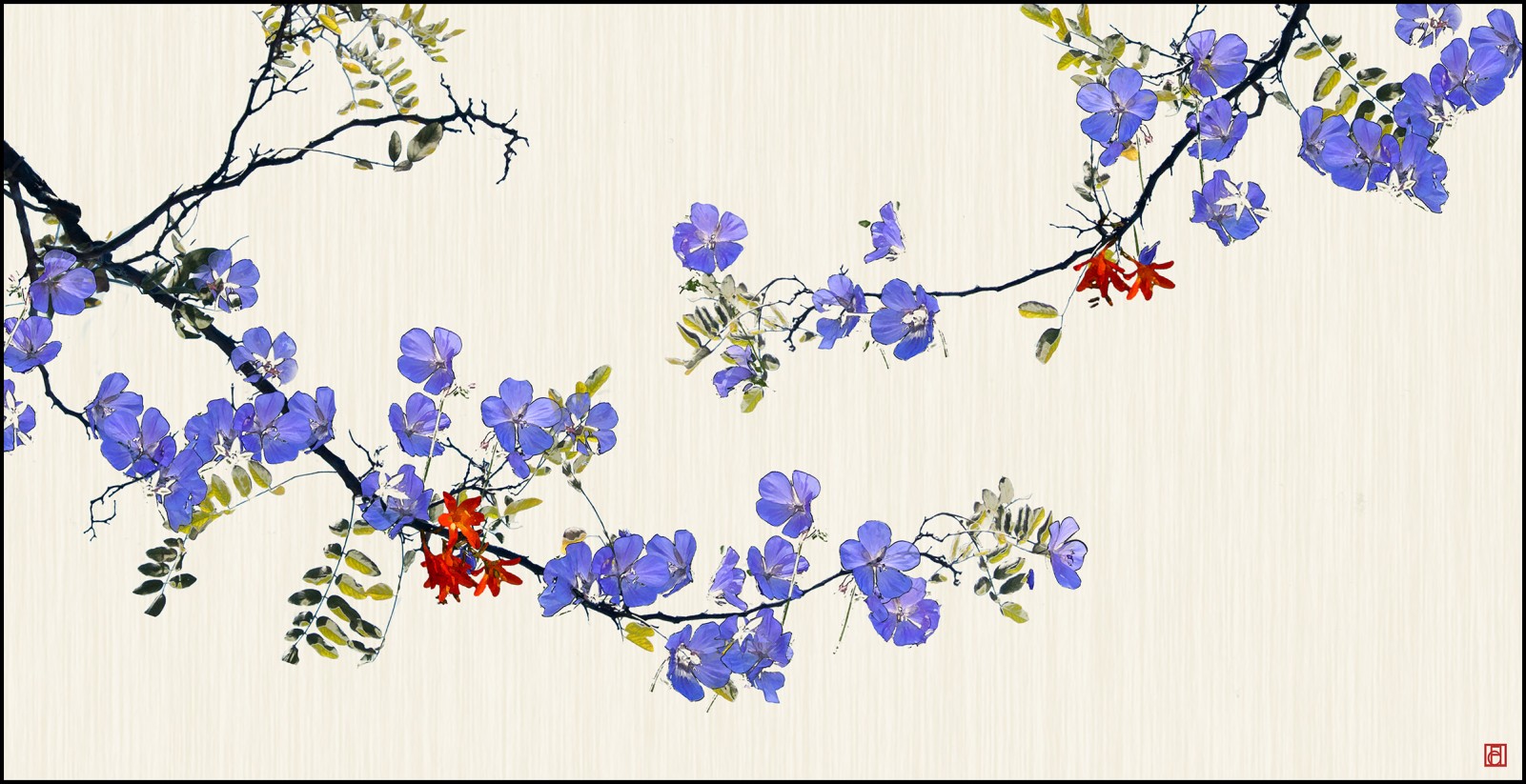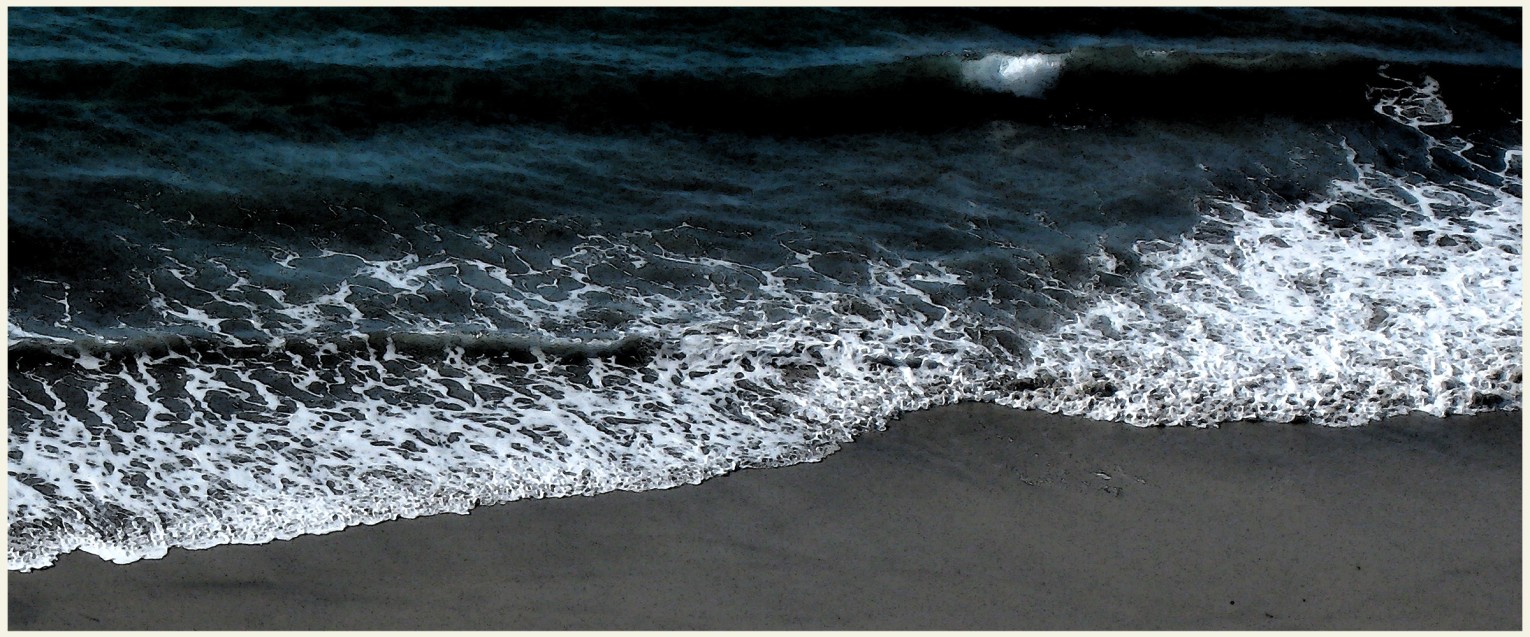Born and raised in the American west. Introduced to art in a polio rehabilitation hospital at age six. Finger painted. Many surgeries, more rehabilitation. Designed doll clothes, made crayon drawings. Graduate studies in anthropology and environmental science. Painted, more drawings, studied art history. Distinguished career in public service. Painted, printed, art classes. Began cutting paper and taking photographs. Working in photo montage printing, paper cutting and occasional painting. Prints and paintings in public and private collections. Adopted the name Doyle Fanning (a combination of her and her mother’s maiden names) to honor female heritage. Lives and works in Olympia, WA.
Influences & Inspiration:
The work has been called “mysterious” “alchemy…more like magic than digital manipulation” “wistful” “elegant in the sense that less is more” “conveying a sense of beauty and fragility”
I just do the work and allow influences and inspiration to come. It is only when the work is done that I may be aware of influences or inspiration. Increasingly the quietude, stillness and space of the high desert landscape of the American West finds its way into the work. And most recently I find myself turning to Makoto Fujimura’s work for inspiration and comfort. www.makotofujimura.com
Makoto’s visit to Nanjing elicited these reflections by Justin Earley on art creating a space for reconciliation: www.curatormagazine.com/justinearley/faith-in-the-useless-art-as-a-space-for-reconciliation/
“The essence of good art is the same essence at work in Oskar Schindler’s factory, John Rabe’s safety zone, and Iris Chang’s truth-telling — an act of hope in a disintegrating world. The glory of these stories is that people do something, even when that something is small and seems useless in the face of overwhelming evil. But that takes faith — faith that something bigger is happening than the little you are contributing.
So, art might seem useless. The body can survive without it. Politics and economies could go on, and relations between Japan and China will continue. But the soul won’t survive — and neither will our human-ness unless beauty exists. The six weeks of Nanjing are a continual reminder of that.”
The Work:
I work late at night when it is quiet and still. I take pieces of photographs from a library of images and layer them together using digital tools. Sometimes I work to create the look of a traditional print process or painting medium. Sometimes I just play around with pieces adjusting the opacity, texture, or color until something takes form. And sometimes I work to solve a particular problem or answer a question.
“Printemps” is a photo-collage of a branch I photographed in Santa Fe, flowers in my garden and a highly manipulated photograph of clouds. (I am a member of the Cloud Appreciation Society and frequently photograph clouds.) With Arthur Wesley Dow’s thoughts on composition in mind, I worked to solve the problem of creating harmony in a space twice as wide as it is high. My last step is to take advice from Coco Chanel and edit out anything unnecessary or extraneous. This editing process is something of a high wire act. Take out too much and there is nothing left of substance. Take out too little and the composition is weighted and heavy.
“The Sands of Time” is my visual response to a question a friend asked: “where does time go?” I started with a large photograph of the Pacific Ocean washing the sands of a beach in Monterey, CA. Then I began focusing in on a smaller and smaller portion of it until the composition felt right and the question answered. While I was working I found myself thinking of time as a dimension through which we move and with each movement a small particle of the past is washed away and a small particle of the future deposited.




